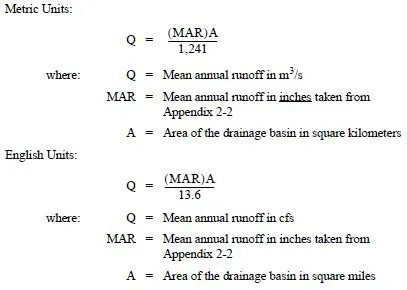A complete theoretical analysis of the hydraulics of a particular culvert installation is time-consuming and complex. Flow conditions vary from culvert to culvert and can also vary over time for any given culvert. The barrel of the culvert may flow full or partially full depending upon upstream and downstream conditions, barrel characteristics, and inlet geometry. However, under most conditions, a simplified procedure is sufficient to determine the type of flow control and corresponding headwater elevation that exist at a culvert during the chosen design flow.
This section includes excerpts from FHWA’s Hydraulic Design Series (HDS) 5, Hydraulic Design of Highway Culverts. The PEO should refer to the Hydraulics Manual for detailed information on the theory of culvert flow or reference an appropriate hydraulics textbook for unusual situations. The State Hydraulics Office is also available to provide design guidance.
The general procedure to follow when designing a culvert for a span width of less than 20 feet measured along the centerline of the roadway is summarized in the steps below. Culvert spans more than 20 feet wide measured along the centerline of the roadway are considered bridges and any hydraulic design for bridges is the responsibility of the State Hydraulics Office; see Section 3-3.1.2 for further guidance.
1. Calculate the culvert design flows (Section 3-3.1)
2. Determine the allowable headwater elevation (Section 3-3.2)
3. Determine the tailwater elevation at the design flow (Section 3-3.3)
4. Determine the type of control that exists at the design flow(s), either inlet control or outlet control (Section 3-3.4)
5. Calculate outlet velocities (Section 3-3.5)
